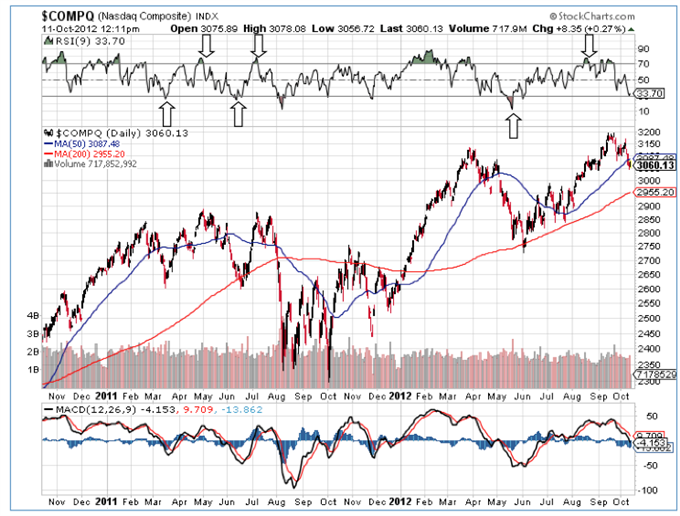It can be difficult to create an automated trading strategy especially when you consider all the computer code that goes into the design. However, when you consider the end result, it may just be worth the endeavor. The end product is a program that calculates and graphically represents all trading decisions—entries, stops, targets, etc. If you wish, this program will actually place and fill the orders in real time.
There are distinct advantages to writing a program that produces an automated strategy. Initially, all calculations and the analysis of the various trading components that make up the actual trade setup are designed to perform accurately and identically each time the trade conditions are satisfied. Additionally, it can result in high-end execution. Using an automated process can significantly reduce the time it takes to back-test a strategy. While it is possible to back-test manually, most find the abundance of data and the creation of graphical displays from back-testing an automated strategy much more useful. When you create data in such a format, the signals for entries and exits can become much clearer.
Furthermore, many people feel that there is less stress associated with trading on an automated level. When you trade manually, it’s highly stressful to properly evaluate a trade setup and constantly monitor the position. When using an automated system, the burden of entry and exit is alleviated by the computer thus removing the emotion from trading. You must dedicate a lot of time to the study of technical analysis before attempting to create a successful trading system.
Technical Analysis attempts to forecast future financial price movements based on an examination of past price movements. Like weather forecasting, it does not result in absolute predictions about the future. Instead, it helps investors anticipate what could possibly happen to prices over time. Technical Analysis uses a wide variety of charts and quantitative indicators that show price fluctuations over time.
When first examining “the technicals” in order to build your model, keep things simple. For the sake of this article, let’s look at two of the most popular indicators – the 200-day Moving Average and the Relative Strength Indicator (RSI).In this situation, a buy signal is generated when the RSI dips below 30 and re-emerges above 30 while the 200-day moving average (red line) is trending higher. Now that a testable buy signal has been formulated, the next step is to design an exit strategy. When using the RSI, a signal that is greater than 70 and that re-emerges below 70 while the 200-day is still trending higher will produce a profitable exit for each trade (see chart below).

At first look, the automated system appears profitable, but that will not always be the case. This is where back-testing your strategy comes in. Simple back-testing may indicate the necessity of changing the system inputs (moving average length, RSI buy, and sell levels), adding other filters, such as time of day to begin and end trading, or using actual dollar stops and target levels. Few, if any, of these necessary adjustments would be possible without the availability of historical testing—only available when the system is set up as an automated strategy. Optimization takes things a step further and attempts to fine-tune a system. It can produce positive results, but more often than not, it brings about the creation of a curve-fitted system that has little, if any, chance of success in real-time trading.
A trader can spend an inordinate amount of time testing a range of variables built into the system. However, such an effort may be futile as the amount of time to complete each test increases exponentially with each optimization parameter added. You should also understand that there remains a risk of curve fitting–a situation where too many variables are used causing over-optimization, which invariably leads to false expectations for the system. In the endgame, we believe that the strategy should match your personal trading style.
Everyone has a style they would like duplicated in an automated trading strategy. The hardest part of implementing a system is actually putting it to work to see how it trades in a real-time scenario. They say the sport of golf is 90 percent mental and 10 percent physical. While that is up for debate, the premise with automated trading is the same. It takes a certain amount of mental toughness to develop a strategy and put it to use. Most beginners are likely to manually exit a trade early that the system initiates. This is normal, but something a trader needs to understand. If you truly develop a system that matches your style, at some point, success can be reached.
Trading foreign exchange on margin carries a high level of risk, and may not be suitable for all investors. The high degree of leverage can work against you as well as for you. Before deciding to trade foreign exchange you should carefully consider your investment objectives, level of experience, and risk appetite. The possibility exists that you could sustain a loss of some or all of your initial investment and therefore you should not invest money that you cannot afford to lose. You should be aware of all the risks associated with foreign exchange trading, and seek advice from an independent financial advisor if you have any doubts.
Any opinions, news, research, analyses, prices, or other information contained is provided as general market commentary, and does not constitute investment advice. Dailyfx will not accept liability for any loss or damage, including without limitation to, any loss of profit, which may arise directly or indirectly from use of or reliance on such information.
The content herein is subject to change at any time without notice, and is provided for the sole purpose of assisting traders to make independent investment decisions. Dailyfx has taken reasonable measures to ensure the accuracy of the information on the website, however, does not guarantee its accuracy, and will not accept liability for any loss or damage which may arise directly or indirectly from the content or your inability to access the website, for any delay in or failure of the transmission or the receipt of any instruction or notifications sent.
DailyFX provides forex news and technical analysis on the trends that influence the global currency markets.Learn forex trading with a free practice account and trading charts from FXCM.




